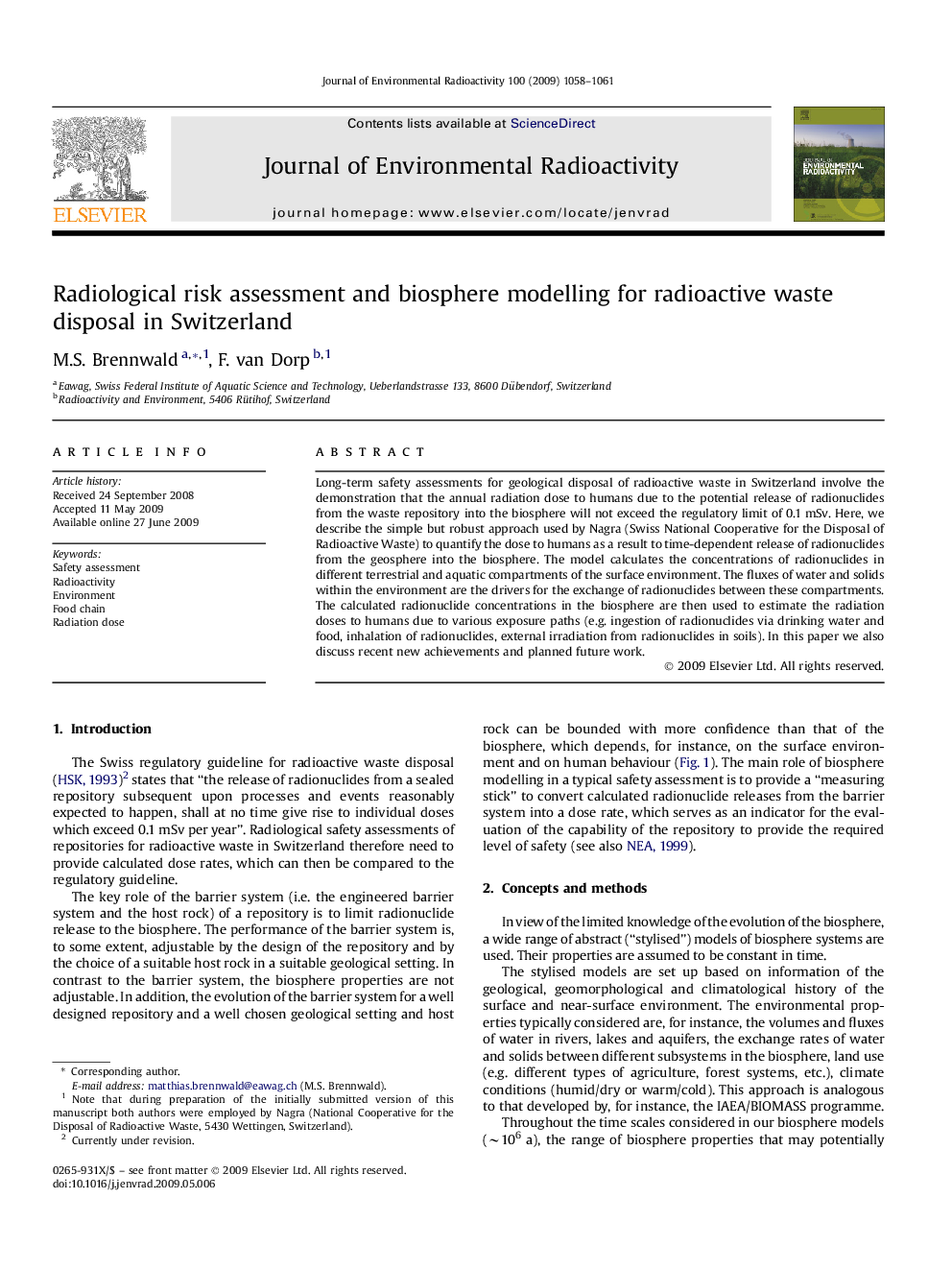| Article ID | Journal | Published Year | Pages | File Type |
|---|---|---|---|---|
| 1738948 | Journal of Environmental Radioactivity | 2009 | 4 Pages |
Long-term safety assessments for geological disposal of radioactive waste in Switzerland involve the demonstration that the annual radiation dose to humans due to the potential release of radionuclides from the waste repository into the biosphere will not exceed the regulatory limit of 0.1 mSv. Here, we describe the simple but robust approach used by Nagra (Swiss National Cooperative for the Disposal of Radioactive Waste) to quantify the dose to humans as a result to time-dependent release of radionuclides from the geosphere into the biosphere. The model calculates the concentrations of radionuclides in different terrestrial and aquatic compartments of the surface environment. The fluxes of water and solids within the environment are the drivers for the exchange of radionuclides between these compartments. The calculated radionuclide concentrations in the biosphere are then used to estimate the radiation doses to humans due to various exposure paths (e.g. ingestion of radionuclides via drinking water and food, inhalation of radionuclides, external irradiation from radionuclides in soils). In this paper we also discuss recent new achievements and planned future work.
